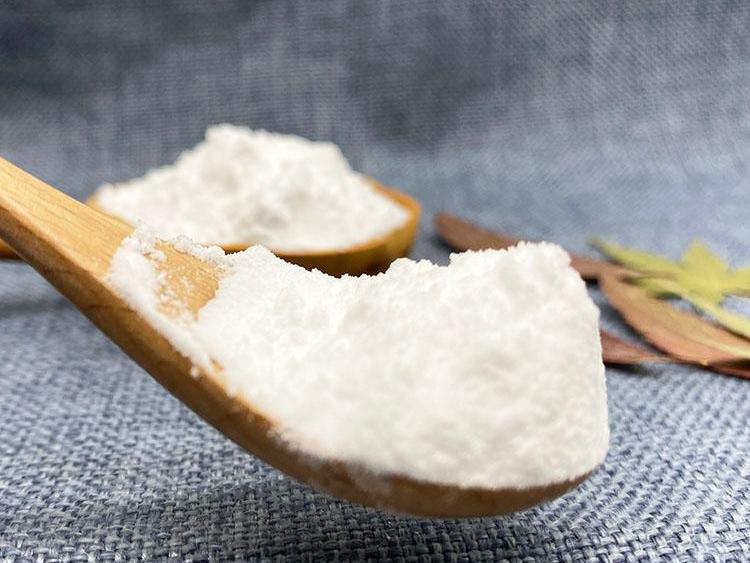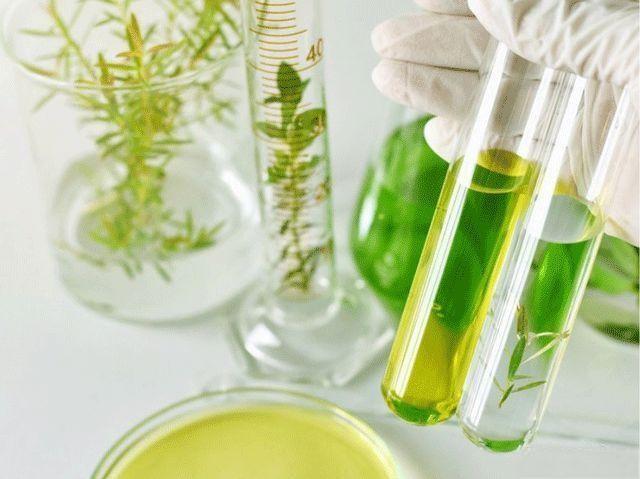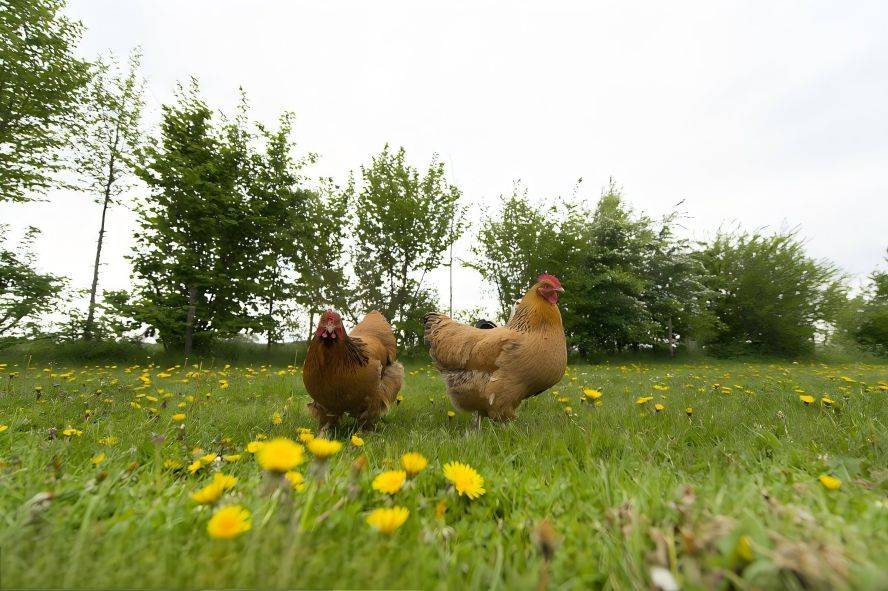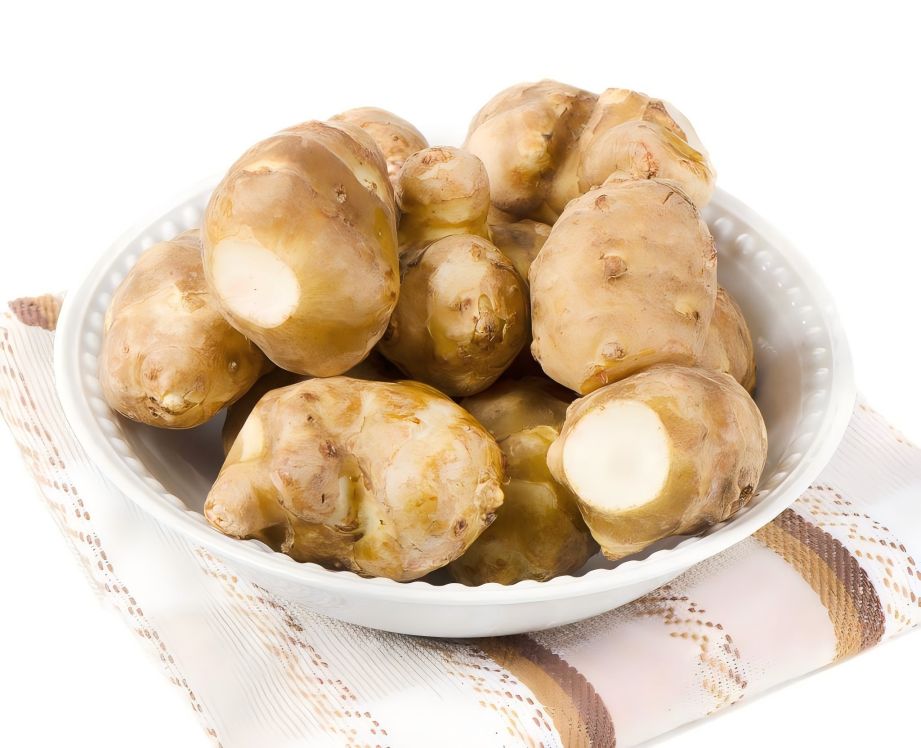What Are Oligofructose Benefits?
Fructooligosaccharides (FOS) [1] are functional oligosaccharides with a degree of polymerization of 2 to 9, formed by the linking of fructose units via a β-2,1 glycosidic bond. According to its structure, fructooligosaccharides can be divided into two types: sucrose-fructose and fructo-fructose. There are two industrial methods for producing fructooligosaccharides: enzymatic hydrolysis using inulin as the raw material and enzymatic conversion using sucrose as the raw material. The former method yields fructooligosaccharides with a wide range of degrees of polymerisation (DP2-DP9), which are fructo-fructose type; the latter method yields fructooligosaccharides with a narrow range of degrees of polymerisation (DP3-DP6), which are sucrose-fructose type. Fructooligosaccharides are prebiotics with excellent physical and chemical properties and physiological effects, which is why they are widely used.
1 Physical and chemical properties of fructooligosaccharides [2-3]
Sweetness: The sweetness of fructooligosaccharides with a purity of 50% to 60% is about 60% that of a sucrose solution of the same concentration. The sweetness of fructooligosaccharides with a purity of 95% is equivalent to 30% that of a sucrose solution of the same concentration. Compared with sucrose, fructooligosaccharides have a refreshing sweetness and a pure taste without any aftertaste.
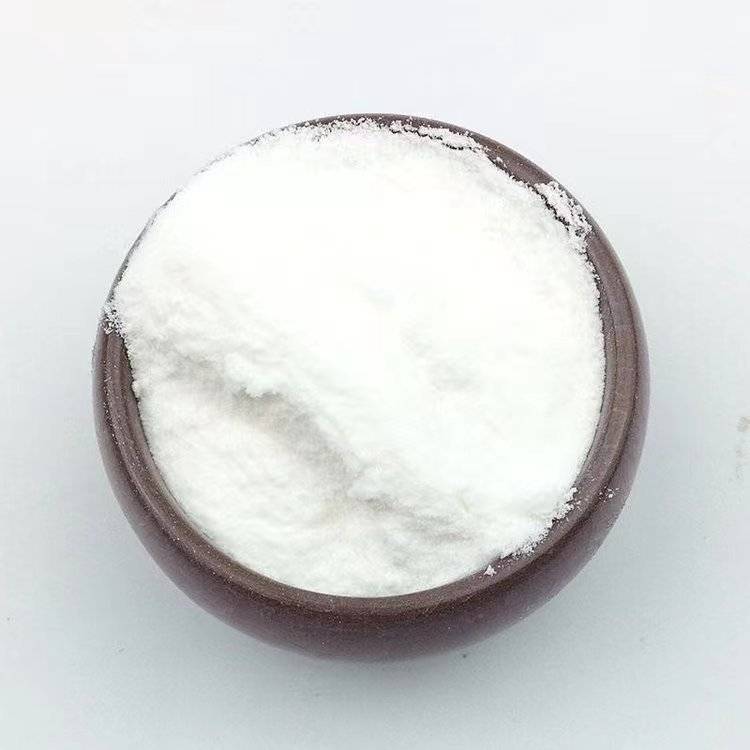
Viscosity: Its viscosity is similar to that of high fructose corn syrup in the temperature range of 0–70°C, and decreases with increasing temperature.
Calorific value: The calorific value of fructooligosaccharides measured in vivo is only 2.276 kJ/g, which is extremely low.
pH and thermal stability: When the pH is neutral, fructooligosaccharides are quite stable at 120°C. When the pH is 3, they are easily broken down and lose their stability significantly after 70°C.
Moisture activity and other properties: Its moisture activity is similar to that of sucrose. In addition, fructooligosaccharides also have good solubility, alkali resistance, shaping properties, non-coloring properties, anti-aging properties, etc.
2 Physiological effects of oligofructose
Studies have shown that oligofructose can improve intestinal flora, relieve constipation, improve lipid metabolism, inhibit intestinal putrefaction, promote the absorption of minerals such as calcium and magnesium, and enhance immunity when consumed by animals or humans [4].
2.1 Increase bifidobacteria and improve intestinal flora
The human intestine is inhabited by beneficial bacteria such as bifidobacteria and lactobacilli, as well as harmful bacteria such as enterobacteria and enterococci. Microecology believes that these bacteria are interdependent and mutually restrictive, and that the predominance of beneficial bacteria such as bifidobacteria is an important guarantee of intestinal health. Oligofructose selectively proliferates bifidobacteria, thereby regulating the intestinal microecological balance and maintaining intestinal health.
Hang Feng et al. [5] randomly divided 120 adult volunteers with qualified physical examination indicators into a blank control group and a test food group. The test food group took 6 mL of oligofructose with a content of 55% or more per day, while the control group took fructose-glucose syrup as a placebo. After 30 consecutive days, the differences in the human intestinal flora before and after the test in the test group were compared, and the differences in the test group and the control group after the test were compared were analyzed. It was found that daily consumption of 3.3 g of oligofructose can regulate the human intestinal flora, activate the proliferation of beneficial bacteria and inhibit the growth of harmful bacteria.
Ma Yan et al. [6] studied the effects of different doses of oligofructose on the intestinal flora of Kunming mice. The results showed that after 7 days of continuous gavage with oligofructose, the number of bifidobacteria in the intestines of mice in the high-dose group increased, while there was no significant change in the number of bifidobacteria in the medium and low-dose groups. There was also no significant change in the number of enterobacteria in the high, medium and low-dose groups. After 14 days of continuous gavage, the number of bifidobacteria in the medium and high-dose groups increased significantly, while the number of lactobacilli in the high-dose group increased significantly, and the number of Clostridium perfringens and enterococci decreased. and Enterococcus decreased, while there was no significant change in the other dose groups.
Damien Paineau et al. [7] confirmed that fructooligosaccharide supplementation can increase the number of bifidobacteria in infant feces. Bifidobacteria in feces come from the intestine, and an increase in the number of bifidobacteria in feces indicates that fructooligosaccharides can promote the proliferation of bifidobacteria in the intestine. Sirimu Celestin et al. [8] found that the addition of fructooligosaccharides to goat's milk or cow's milk can promote the proliferation of probiotics such as Bifidobacterium during fermentation.
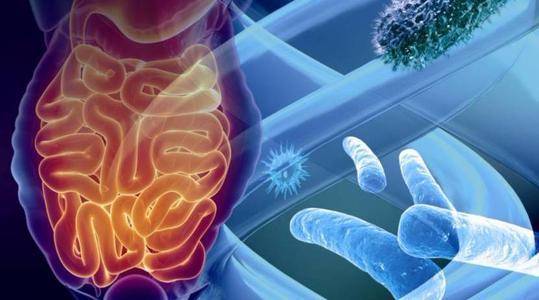
Zhao Hongling et al. [9] found in an in vitro experiment that when Bifidobacterium and Escherichia coli were cultured separately, the addition of 2% yacon oligofructose to the culture medium could promote the proliferation of Bifidobacterium and inhibit the growth of Escherichia coli. Zhang Zesheng et al. [10] found through experimental research that both inulin and sucrose-derived oligofructose can promote the in vitro proliferation of bifidobacteria, but inulin-derived oligofructose has a better in vitro growth-promoting effect on bifidobacteria than sucrose-derived oligofructose.
2.2 Laxative, relieves constipation
Fructooligosaccharides are a type of small-molecular-weight water-soluble dietary fibre. When ingested, they can stimulate intestinal peristalsis, change the osmotic pressure of intestinal contents, and increase stool moisture, thereby having a laxative effect and relieving constipation.
Wang Yu [11] found that after constipated patients took 5 g of oligofructose daily for 7 consecutive days, the frequency of bowel movements increased, and the condition and character of bowel movements improved, which shows that oligofructose has a certain laxative effect. Han Yanbin et al. [12] found that oligofructose has a significant effect of promoting intestinal peristalsis and enhancing laxative effect. Chu Wei et al. [13] established a mouse constipation model to explore the laxative effect of fructooligosaccharides. The study found that, without affecting the growth and development of constipated mice, fructooligosaccharides can enhance the propulsion of the small intestine, shorten the time to the first bowel movement, and increase the number and quality of feces. This shows that fructooligosaccharides can promote defecation in constipated mice.
2.3 Lowering blood lipids, blood cholesterol and improving lipid metabolism
Fructooligosaccharides can effectively reduce the levels of free fatty acids, triglycerides and serum cholesterol in the body, and have a good effect on improving cardiovascular diseases such as atherosclerosis and hypertension caused by high blood lipids [4]. Adeela Yasmin et al. [14] conducted a study using rats as research subjects and found that drinking milk beverages with added fructooligosaccharides can significantly reduce the levels of total cholesterol, low-density lipoprotein and triglycerides in the blood, and increase the level of high-density lipoprotein. levels and increase the high-density lipoprotein levels. Fernanda Soares da Silva-Morita et al. [15] conducted a test using obese rats as the research object and showed that consuming oligofructose has a hypolipidemic effect. Liu Guohong et al. [16] found that FOS can not only reduce the triglyceride content in the serum of normal mice, but also reduce the absorption of cholesterol, peanut oil and lard by the gastrointestinal tract, which shows that FOS can affect lipid absorption and metabolism.
2.4 Inhibits intestinal putrefaction and promotes the absorption of minerals such as calcium and magnesium
Fructooligosaccharides, as a type of dietary fibre, have the effect of binding metal ions. In the stomach and intestines, they can form FOS-mineral complexes, which release the minerals when they reach the large intestine. FOS is fermented by intestinal bacteria, producing short-chain fatty acids such as acetic acid, propionic acid, butyric acid, and lactic acid, which lower the pH of the intestinal environment, inhibit the growth and reproduction of harmful bacteria and pathogenic bacteria, and reduce the production and accumulation of intestinal toxins and putrefactive substances. The lowered pH of the intestinal environment also facilitates the dissolution of mineral salts such as calcium and magnesium, thereby promoting the absorption of minerals such as calcium and magnesium by the body [4, 17].
Carlo Pinna et al. [18] found that the intake of oligofructose can improve the metabolism of intestinal microorganisms in dogs, reduce ammonia concentration, and promote the production of volatile amino acids, acetic acid, propionic acid, butyric acid, etc. Ellen G.H.M. van den Heuvel et al. [19] found that 36 days of continuous consumption of short-chain oligofructose can promote the absorption of magnesium in adolescent girls.
2.5 Boosts immunity and reduces the risk of cancer
Bifidobacteria and their metabolites can enhance the activity of macrophages and NK cells, promote the production of antibodies and the secretion of other immune factors, thereby enhancing the body's defenses. Fructooligosaccharides can proliferate bifidobacteria, so consuming fructooligosaccharides can boost the body's immunity [20]. Fructooligosaccharides can also promote the synthesis of vitamins B1, B2, B3, B6, B12 and folic acid, thereby increasing the body's metabolic level and enhancing the body's immunity and disease resistance [4]. Animal experiments have shown [21] that the proliferation of bifidobacteria in the intestine can play an anti-cancer role, because the cells, cell wall components and extracellular secretions of bifidobacteria enhance the body's immunity. Since oligofructose can promote the proliferation of bifidobacteria, consuming oligofructose can reduce the risk of cancer and improve the body's ability to fight cancer.
3. Application of oligofructose [22-24]
Due to its good physical and chemical properties and physiological effects, oligofructose is widely used in the food, health product and feed industries.
3.1. Application in ordinary foods
Oligofructose has low calorific value, good thermal stability, and the property of inhibiting starch aging. Therefore, it can partially replace sucrose and be added to baked goods such as biscuits, bread, and mooncakes. Baked goods with added fructooligosaccharides have a pure sweetness, retain their shape and color well, and have the effect of promoting the growth of beneficial bacteria. They are nutritious and healthy. In addition, fructooligosaccharides also have excellent solubility and shaping properties, and can be used in the production of chewing gum, peanut brittle and other sweets.
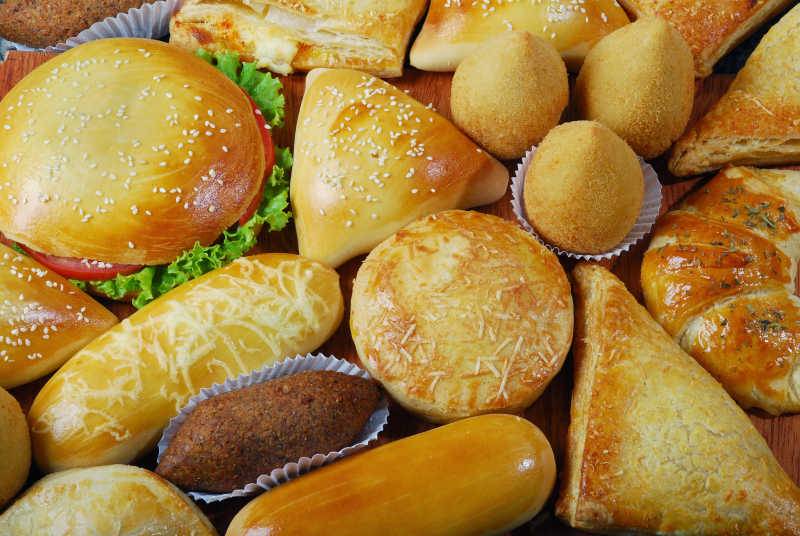
3.2 Application in health products and special medical foods
Based on the physiological effects of oligofructose described above, it is used in a variety of health products. In the domestic market, there are many health products that use oligofructose as a raw material or auxiliary ingredient, such as Baolingbao prebiotics, Jintongluo compound prebiotics, Aliguo prebiotics, Perfect brand oligofructose sea buckthorn tea, Xiu Zheng Pharmaceutical's Shuchang oral liquid, and Duowei Sheng brand iron, zinc, calcium, amino acid oligofructose oral liquid.
Dietary fiber is good for the human intestine, but for patients who eat through a tube, many dietary fibers are not compatible with liquid medical foods. On the one hand, insoluble fibers tend to settle, causing blockages in the feeding tube; on the other hand, soluble dietary fibers increase the viscosity of the food, making it more difficult to administer through a fixed tube. Fructooligosaccharides are a type of small-molecular-weight, water-soluble dietary fibre that do not precipitate or increase the viscosity of food. They are well-compatible with liquid medical foods and have the physiological effects of various dietary fibres.
3.3 Application in infant formula and other dairy products
Fructooligosaccharides have a variety of superior physiological functions. They are a new type of sugar source that combines nutrition, health care and therapeutic effects. They are widely used in the dairy industry at home and abroad, for example, added to milk powder, yogurt and whole milk. Oligofructose-added products in China include: Mengniu's Oushichaojinji Infant Formula, Jinzhuang Student Multi-Dimensional High Calcium and High Zinc Milk Powder, Yili's Chaojinchao Infant Formula and Beiguan Infant Formula, and Junlebao Dairy's Junlebao Infant Formula.

3.4 Application in ordinary beverages and alcohol
Beverages with added oligofructose are nutritious and healthy, and have a good taste and unique flavor. At present, a series of functional beverages that meet the needs of different groups of people have been developed, such as nutritious sugar-free beverages, sports drinks, low-calorie beverages, etc.
Beer contains a variety of substances with health-promoting properties, such as vitamins, polysaccharides, peptides, electrolytes, organic acids, phenols and ketones. These substances can enhance blood circulation and promote digestion and absorption in the body. Adding oligofructose to beer can promote the proliferation of bifidobacteria in the intestines, regulate the intestinal microecological balance, increase the volume and speed of bowel movements, prevent constipation, inhibit colon cancer, and lower blood lipids and blood pressure.
Compared to sucrose, oligofructose has a fresher, softer sweetness and similar processing characteristics. Therefore, fructooligosaccharides can also be added to yellow wine and medicated wine as a substitute for sucrose. This not only does not change the quality of the yellow wine and medicated wine, but also further improves their taste and efficacy. At present, Shanxi Xinghuacun Distillery has added fructooligosaccharides to the traditional product “Bamboo Leaf Green Wine”. The health benefits of this wine have been confirmed by modern hygiene experiments, and the distillery has also obtained two health food certificates for the 28-degree and 38-degree wines.

3.5 Application in the feed industry
Fructooligosaccharides can be added to animal feed as a feed additive. Its main effect is to promote the proliferation of bifidobacteria in the animal's intestine. While the total amount of bacteria in the animal's intestine remains the same, the growth rate of bifidobacteria is increased, thereby inhibiting the growth and reproduction of harmful bacteria in the intestine to varying degrees. In addition, fructooligosaccharides also have the effect of improving feed conversion rates and enhancing the animal's immune system.
Wang Bo et al. [25] found that fructooligosaccharides (i.e., fructooligosaccharides) can improve the intestinal microbial flora of gilts, as well as their serum immune indicators and production performance.
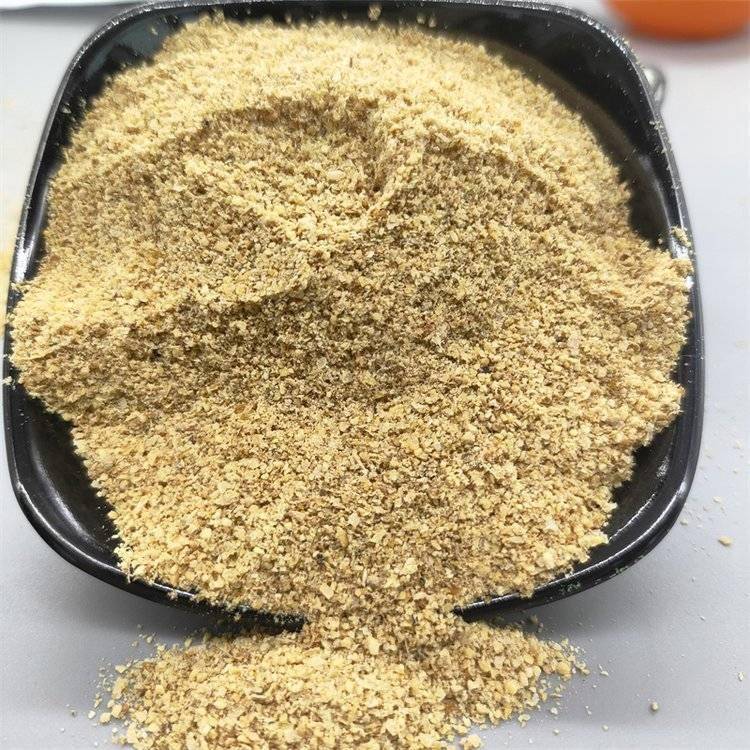
4 Discussion and outlook
In China, the research and development of fructooligosaccharides has a history of more than 20 years. Both basic research and applied research have made considerable progress. However, we should also be aware of the shortcomings: the research, production and application of fructooligosaccharides in China started relatively late compared to other countries or regions such as Japan and Europe. The general public does not understand or has little understanding of the prebiotic effects of fructooligosaccharides, and knowledge about fructooligosaccharides still needs to be promoted and publicized. Regarding the physiological effects of fructooligosaccharides , there are more studies on experimental animals and in vitro studies, and there are fewer studies on humans and in vivo systems, which should be strengthened; at present, fructooligosaccharides are mostly used in dairy products and health products, and relatively less in other areas, and research on the application of fructooligosaccharides in other fields needs to be greatly strengthened; the use of enzyme preparations to produce fructooligosaccharides can simplify the production process and is fast and efficient, so it is favored by domestic fructooligosaccharide manufacturers.
References:
[1] National Technical Committee for Food Industry Standardization of Standardization Administration of China, Technical Committee on Industrial Fermentation. GB/T23528-2009 Fructooligosaccharides [S]. Beijing: China Standards Press, 2009.
[2] Jing MY, Sun JY. Application prospects of natural active ingredient fructooligosaccharides [J]. Feed Research, 2004 (1): 22-27.
[3] Wang Shihua, Peng Limin, Zhang Hui, et al. Development and application of oligofructose [J]. China Dairy Industry, 2002, 30(2): 31-34.
[4] Xue Shan. Research progress in the biological effects and production technology of oligofructose [J]. Food Industry, 2012, 33(4): 115-119.
[5] Hang Feng, Wu Jianfeng, Wang Yinyu, et al. Research on the regulation of oligofructose on the function of the human intestinal flora [J]. Dairy Science and Technology, 2010 (3): 108-111.
[6] Ma Yan, Guo Jing. Analysis of the effect of different doses of oligofructose on the physiological flora [J]. Agricultural Machinery, 2012 (1): 120-123.
[7]Damien Paineau,Frederique Respondek,Vincent Menet,et al. Effects of short-chain fructooligosaccharides on faecal bifidobacteria and specific immune response in formula- fed term infants :a randomized ,double-blind ,placebo- controlled trial[J]. J. Nutr. Sci. Vitaminol ,2014 ,60 :167- 175.
[8] Sirimu Celestin ,S S Thorat ,R J Desale ,et al.Effect of milk supplementation with fructooligosaccharides and inulin on viable counts of probiotic bacteria in goat and cow Milk Yoghurts[J]. IOSR Journal of Environmental Science, Toxicology and Food Technology ,2015 ,9(7):6-12.
[9] Zhao Hongling, Hao Ting, Wang Xiaoqing, et al. Effect of yacon oligofructose on the growth of intestinal bacteria in vitro [J]. Food Research and Development, 2016, 37(3): 80-82.
[10] Zhang Zesheng, Zhang Li, Lv Xiaoling, et al. Study on the in vitro proliferation of Bifidobacterium by inulin oligofructose and sucrose oligofructose [J]. China Food Additives, 2016 (1): 76-80.
[11] Wang Y. Research on the laxative effect of oligofructose and its influence on the absorption of minerals and lipids in the intestine [D]. Shandong University, 2008.
[12] Han Y B, Yao S Y, Li B, et al. Experimental study on the effect of oligofructose on intestinal peristalsis [J]. Chinese Journal of Tropical Medicine, 2009, 9 (4): 764-765.
[13] Chu Wei, Fu Xiaolin, Fan Zhihui, et al. Research on the laxative function of oligofructose in constipated mice [J]. Chinese Medicine and Clinical, 2010, 10(10): 1135-1136.
[14]Adeela Yasmin ,Masood Sadiq Butt ,Marleen van Baak, et al. Supplementation of prebiotics to a whey-based beverage reduces the risk of hypercholesterolaemia in rats[J]. International Dairy Journal ,2015,48 :80-84.
[15] Fernanda Soares da Silva-Morita ,Sandra Lucinei Bal bo ,Mariana Carla Mendes ,et al. Short-chain fructooligosaccharides do not alter glucose homeostasis but improve the lipid profile in obese rats[J]. Acta Scientiarum. Health Sciences ,2015 ,37(2):119-125.
[16] Liu Guohong, Ma Jiaojie, Wei Ying, et al. Discussion on the hypolipidemic effect and mechanism of oligofructose [J]. Food and Drugs, 2015, 17(1): 34-36.
[17] Zhu Zhihuai, Li Yongmin, Wang Zhiyuan. Research on the effect of oligofructose on calcium absorption [J]. China Dairy Industry, 2008, 36(8): 63-64.
[1 8] Carlo Pinna ,Carla Gi u ditta V ecchi a to ,Giuliano Zaghini ,et al. In vitro influence of dietary protein and fructooligo saccharides on metabolism of canine fecal microbiota[J]. BMC Veterinary Research ,2016 ,12:53.
[19]Ellen G H M,van den Heuvel ,Theo Muijs ,Fred Brouns, et al. Short-chain fructooligosaccharides improve magnesium absorption in adolescent girls with a low calcium intake[J]. Nutrition Research ,2009 ,29:229–237.
[20] Wang Jinhai, Feng Shan, Zhu Hongyang, et al. Research progress on the physiological functions and applications of oligofructose [J]. Strait Pharmacy, 2015, 27(7): 7-9.
[21] A two-way regulator of intestinal microecological balance—high-purity oligofructose [N]. China Food News, 2012-5-7(006).
[22] Jiang Bo. Application of oligofructose [N]. China Food News, 2009-10-14 (004).
[23] Wang Naiqiang, Liu Hui, Li Guoqing, et al. Application of oligofructose in foods for special medical purposes [J]. Fine and Specialty Chemicals, 2013, 21(6): 11-14.
[24] Lin Qinlu, Qin Dan, Jin Yanghai. Production and application of functional factors of oligofructose. China Food and Nutrition, 2002(4): 19-21.
[25] Wang Bo, Tian Heshan, Zhang Fuliang, et al. Effects of probiotics, fructooligosaccharides and their combination on the reproductive performance, serum immune indicators and intestinal microflora of gilts [J]. Chinese Journal of Animal Science, 2015, 51(11): 50-55.


 English
English French
French Spanish
Spanish Russian
Russian Korean
Korean Japanese
Japanese